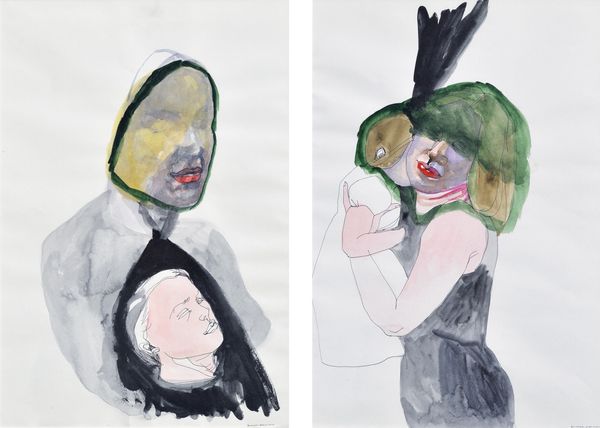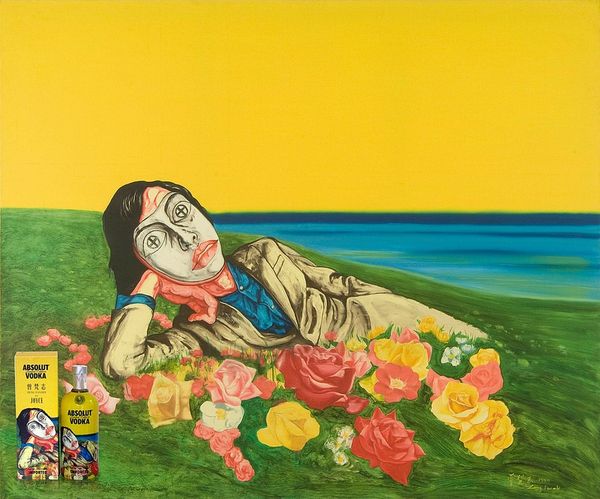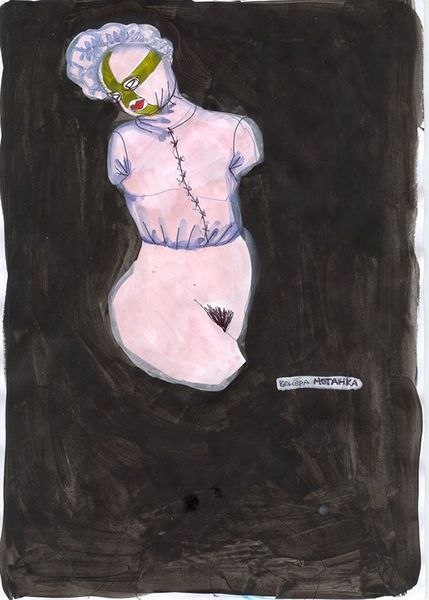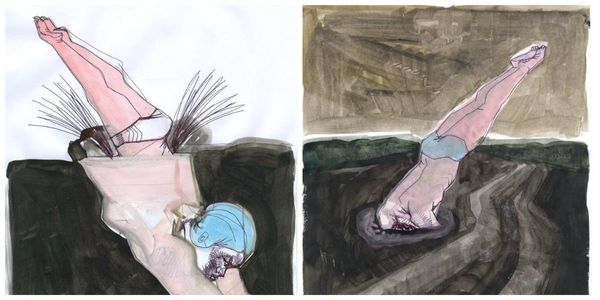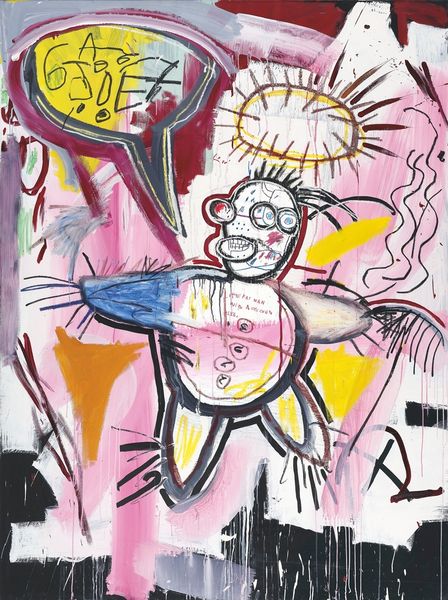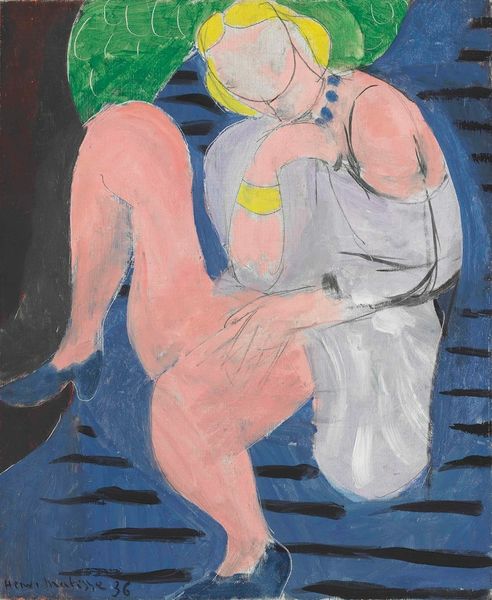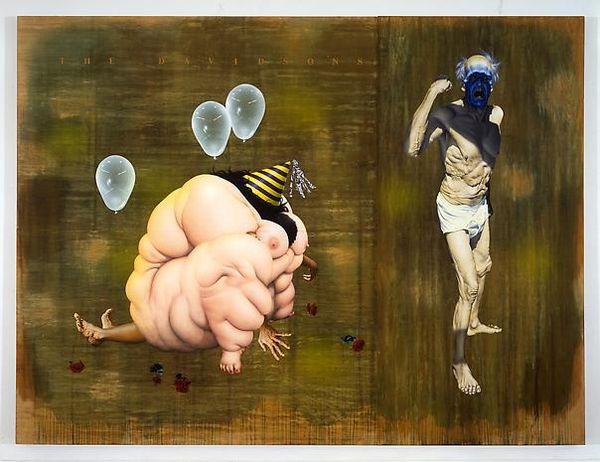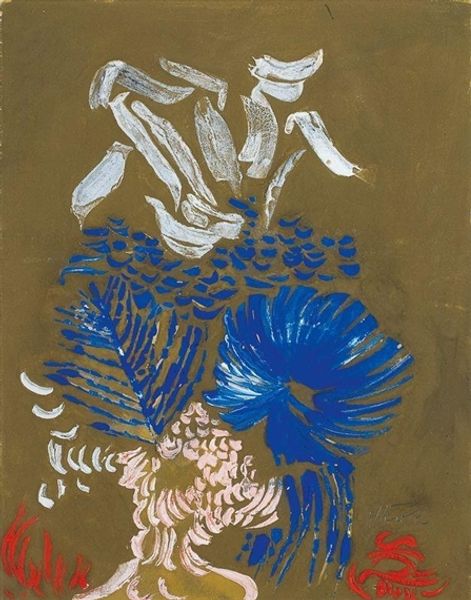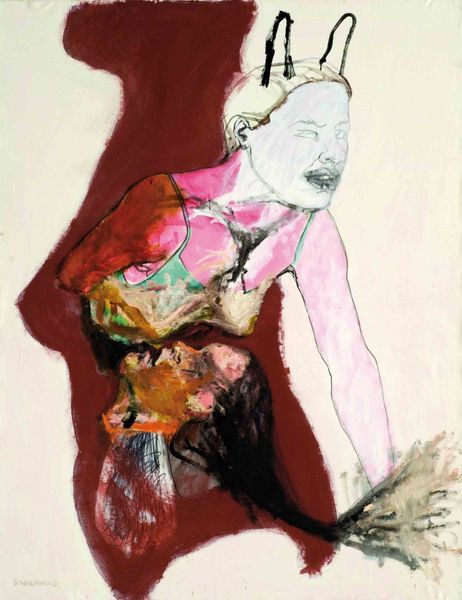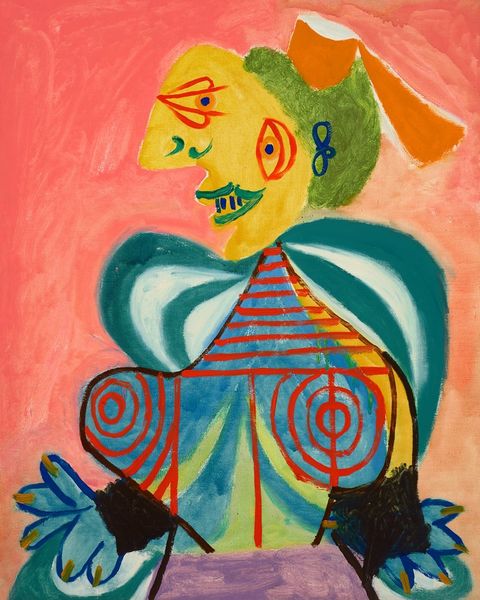
Copyright: Vlada Ralko,Fair Use
Editor: Here we have Vlada Ralko's "Kyiv Diary," created in 2014. It appears to be a mixed-media piece incorporating drawing, watercolor, and ink. There is a rather disturbing juxtaposition of images. What do you make of this work? Curator: I see a direct confrontation with the means of image production, particularly concerning representation of conflict and trauma. Ralko, here, employs mixed media—humble materials really, ink and watercolor—to render a stark contrast between images of death and veiled resistance. Think about the social context of 2014 Kyiv: the Maidan Revolution, the beginning of the war. How do these accessible materials impact the meaning, considering what more traditional "fine art" materials might convey? Editor: It's interesting that you bring up the idea of accessible materials. Do you think this impacts the viewer's perception? Curator: Absolutely. The rawness of ink and the fluidity of watercolor avoid any sense of monumentality or grandeur, qualities often associated with more "high art" mediums. Instead, there’s an immediacy, a sense of lived experience translated directly onto the page. This challenges established power structures, rejecting a distanced, idealized view of conflict. It forces us to confront the raw, unedited reality. Editor: So the materials themselves become a form of resistance? Curator: Precisely. By choosing these everyday materials and employing an expressionistic style, Ralko democratizes the narrative. She questions the authority of conventional artistic representations of war and trauma. Think about the labor involved – the repetitive act of drawing and painting as a form of processing collective trauma. Editor: This makes me think about the diary aspect of the title. It’s not just a depiction, it’s a personal record. Curator: Indeed. And that shifts the focus from detached observation to embodied experience. The ‘Kyiv Diary’ becomes a testament to the power of individual narratives in challenging dominant historical accounts. Editor: That's a completely different way of seeing this piece! It really changes how I understand the artist's message. Curator: It does for me too, revisiting it is an opportunity to reflect again on Ukraine and trauma and resistance, and representation.
Comments
No comments
Be the first to comment and join the conversation on the ultimate creative platform.
